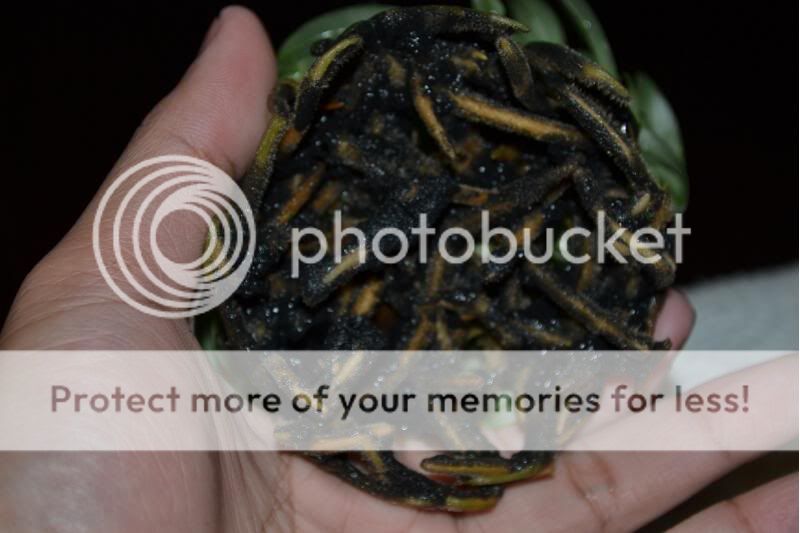I started potting up newly deflasked seedlings completely undisturbed, a number of years ago and it works really well. Plus, deflasking and potting up a flask using this method takes only about a minute, rather than hours (if you have OCD about removing all the agar and separating all the seedlings. What a lot of work!).
First of all, open the flask a day or two before you deflask. Leave the top off to allow the fresh air inside and start the hardening off process before they are disturbed at all. After a maximum of about 48 hours, there will still not be any mould or other "fuzzy" stuff growing; but, the seedlings will be much happier because of having the gentle introduction to the outside world.
Then, half fill a 5" pot with drainage material (whole styrofoam peanuts) and then put about an inch of moistened seedling grade potting mix on top of the peanuts. Place the flask on top of the layer of mix, centred in the pot. Then, fill in around the flask with more mix, raising the mix up just a bit more than the thickness of the agar in the flask. Carefully remove the flask, leaving a perfectly flask-shaped "pot-hole" in the mix. Next, remove the seedlings, along with their agar, left completely intact and carefully settle the agar "disk" into the "pot-hole" in the 5" pot. Gently adjust the medium around the agar disk; but, do not press down. If the agar disk is a bit high, carefully add a little more mix all around it until the mix is just barely above the level of the agar. Then, sprinkle a bit more mix in amongst the seedlings and use an artist's paintbrush to gently "flick" it and make it settle through the leaves and sit on the agar surface. It's not important to cover every bit of agar so that you cannot see it. Just get most of the agar surface that is exposed to the air, under some potting mix. Gently; but, thoroughly water the seedlings with a fine mist and place in your seedling growing area.
This way, the seedlings have been deflasked and potted; but, with zero stress and damage being done to them. The agar may grow some grey fuzzy mould; but, so what. Just care for the seedlings as you would seedlings that were potted without their agar. The agar will disolve away if it's very soft, or it may dry a bit and stiffen. Again, so what. The seedlings will begin growing new roots, as they continue to be supported by their undamaged, agar roots. As time passes (3 to 6 months), the seedlings will increase in size and grow roots out of the agar disk and into the potting mix. Once the seedlings have added some size, you can unpot them all, separate them, grade them and pot them up......the largest ones into their own pots and put the rest in 3" community pots of 3 or 4 seedlings each. Seedling roots can be impossible to separate when they are freshly deflasked and more often than not, lots of unnecessary damage is done by people who insist on removing all the agar and separating all the seedlings. It's NOT necessary. After the seedlings have grown this way for a few months, as described above, they come apart from each other much more easily at repotting time. Much less damage is done and you end up WAY ahead because you didn't cause them severe trauma on deflasking day. I can deflask and pot up 20 flasks an hour using this method. Here are a couple photos of a bunch of Cattleya seedlings that I deflasked using this easy and much better method.








